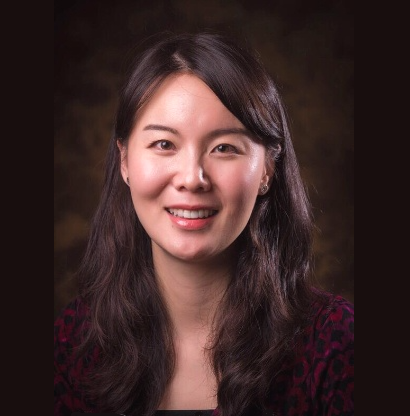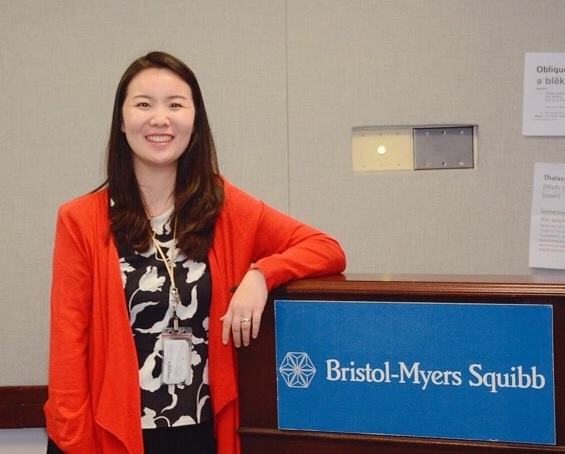Bingxin Shen (Ph.D EE 2011)
 Cutting edge jobs require a strong base of preparation – both in education and experience.
Bingxin Shen demonstrates the career boost that a Stony Brook education can have on
this process.
Cutting edge jobs require a strong base of preparation – both in education and experience.
Bingxin Shen demonstrates the career boost that a Stony Brook education can have on
this process.
Bingxin graduated with a PhD in electrical engineering from Stony Brook University in 2011. This helped her to secure a position as a Postdoctoral Research Scientist in Dr. Joachim Frank’s lab at Columbia University Medical Center and in 2013 was promoted to Associate Scientist affiliated with the Howard Hughes Medical Institute. Dr. Frank received a Nobel prize in 2017 for image processing research on cryogenic (low temperature) electron microscopy (cryo-EM). In the lab Bingxin applied image processing and machine learning techniques to time resolved cryo-EM data sets. She reconstructed a series of 3D structures with very fine resolution from a terabyte-size data set of millions of 2D images with poor resolution. This gave insights into ribosome (a cellular component consisting of RNA) composition changes and distributions at different times after the onset of stress for living cells.
In 2017 she joined Temple University as an assistant professor in computer and information science. While there, she continued her research in biomedical image processing and application development. In 2018 she was recruited by Bristol-Myers Squibb (BMS) to lead a data scientist group and work on projects using programming languages and packages such as MATLAB, Python, R and SAS for pharmaceutical research and business development. She currently serves as the Associate Director for Scientific Programming, Information Management and Application Development in the Information Technology department at BMS.
 While she enjoyed the flexible schedules and the freedom to choose different research
directions in academia, she also values the industrial projects at BMS for their immediate
positive impact on patients’ lives. She also enjoys the team collaboration and learning
process across multiple functional areas and disciplines. Bingxin thinks that everyone’s
career path should converge at a certain stage to give a good work-life balance that
uses one’s talents and strengths, promotes learning and fits one’s skill sets and
personality.
While she enjoyed the flexible schedules and the freedom to choose different research
directions in academia, she also values the industrial projects at BMS for their immediate
positive impact on patients’ lives. She also enjoys the team collaboration and learning
process across multiple functional areas and disciplines. Bingxin thinks that everyone’s
career path should converge at a certain stage to give a good work-life balance that
uses one’s talents and strengths, promotes learning and fits one’s skill sets and
personality.
While at Stony Brook, Bingxin found her thesis advisor, Professor Monica Bugallo, to be a passionate researcher and excellent role model. Bingxin mentioned that Professor Bugallo always encouraged her to look forward and try new opportunities and still remembers the exciting moment when she received a research assistantship sponsored by Brookhaven National Laboratory through Professor Bugallo. Bingxin thinks that the combination of her research experience, time management, and communication skills, all inspired and polished by Professor Bugallo, led to her current position at BMS.
Professor Petar Djuric was also a favorite professor of Bingxin’s at Stony Brook, admiring his commitment to both research and teaching, and between academia and industry. Bingxin learned a great deal from Prof. Djuric on communicating and presenting information.
Bingxin has remained active in the Stony Brook community, volunteering in the Women in Science and Engineering (WISE) Honors Program at Stony Brook and Brookhaven Woman in Science (BWS).
Bingxin advises current Stony Brook students to set up long-term goals and work towards that, but always adjust the pace properly and reach out for help when needed.
